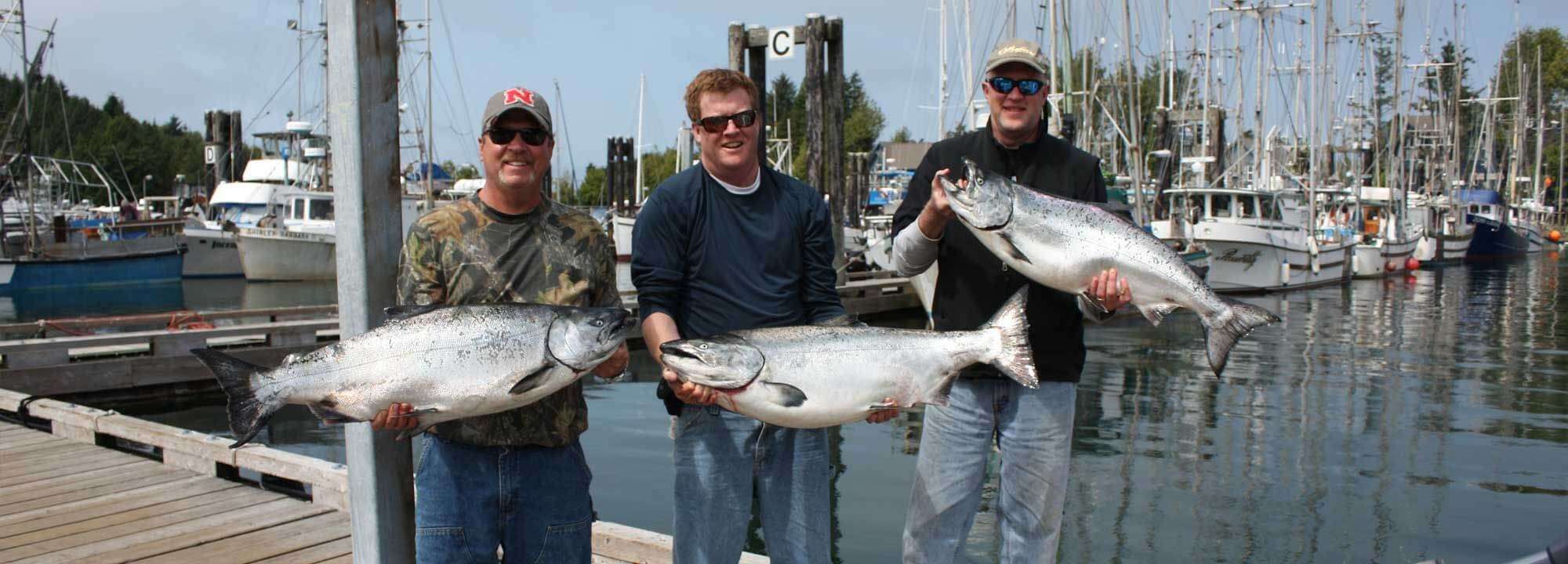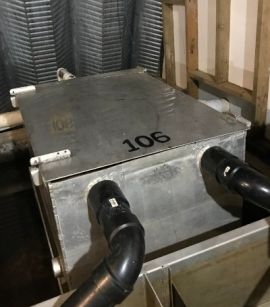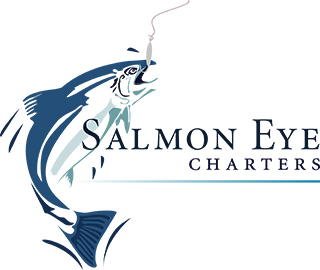
Gallery
Recent Posts
In the action…
The best Chinook fishing has…
KMSpico Download ➤…
KMSpico download ➔ Activate Microsoft…
Online Games with…
Online games with free spins…
Latest News
Get your spot reserved as soon as possible!
This is a private mailing list and will never be sold or given away for any reason. You can unsubscribe at any time.
WHAT HAPPENS INSIDE A HATCHERY?
What happens at a Hatchery?
By James Costello
Part 1:
After the often difficult, yet incredibly rewarding process of brood stock collection is complete and salmon enhancement workers have taken the eggs and milt needed from the adult fish – the fertilization and incubation phases can start. These actions take place within the hatchery and require a substantial amount of infrastructure and expertise to be successful.
Many hatcheries are run by volunteers and operate on budgets that rely primarily on donations from caring individuals, but funding for larger groups may be provided by government sources. Both types can also be supplemented with grants from various environmental non-government organizations (ENGO’s) which draw support from major donors and work to identify high value projects and areas of need. In all instances – more would always be better, as the list of needed equipment and new projects is endless!

Regardless of the scale of the operation, the biological processes remain the same, and dedicated staff and volunteers work to ensure the best possible results in everything they do. This is where a focus on record keeping and attention to detail really come into play, as unlike the rough and tumble world of counting and capturing salmon, the next steps require a very controlled and clean environment.
Eggs that have been stripped from female fish are measured by volume or weight in order to get a count while being stored in individually marked buckets that have been cleaned and dried – any foreign material or water can interfere with the fertilization process, and even a drop of water can cause a salmon egg to harden as the outer layer naturally seals itself in response to being expelled from the fish’s body into the river. This process naturally happens within about 30 seconds and is the reason that wild fish spawning doesn’t have 100% success in nature – the milt (sperm created in the gonads of the male) must be mixed into the water upstream at just the right moment and contact the eggs in order for the sperm to enter the egg. There are many things that have to go right in this moment, and if everything doesn’t line up the egg will fall into the gravel unfertilized and never grow into a baby salmon.
In the hatchery there are a few things that are done to make sure that every egg gets a chance to be fertilized, starting with how the milt gets added to the eggs. When the milt is collected from the males it is stored in a small plastic bag and kept in a dark place, as sunlight will damage it and make it infertile. Once the eggs are organized the milt is added into the eggs and carefully mixed by hand, or even delicately stirred with – a feather! After the mixing is complete a small amount of water is added into the container to complete the fertilization process – this is where the outer layer of the egg closes and creates a barrier to the outside world, with the sperm from the male safely inside to begin the next phases of life.
The fertilized eggs are then moved into rearing containers where they will be kept in a dark, quiet, and still place closely resembling the gravel in the riverbed they would naturally settle into – this is the incubation phase. At this point it is essential to keep a constant flow of fresh, clean water moving over the eggs to ensure they have enough oxygen to grow – inside the egg there will be cells dividing and many things happening that would be disrupted by movement or light. There are a few types of rearing containers, out there, but most commonly they will be stacked basket type called “Heath Trays”, or a bulk incubator where a large number of eggs are placed inside a box and have water pumped through. All incubation types need a consistent, clean source of water and most will have a “header tank” which allows for sediment to be removed and for the individual flow to each set of containers to be controlled.
As the eggs grow, they will become more resilient, and can be handled in order to count them and remove any dead or unfertilized ones – if these are left in the container, they will start to develop a fungus which can spread to other healthy eggs and cause mortality. This activity is where hatchery workers and volunteers will spend much of the winter, as there may be several thousand eggs in each Heath Tray, or tens of thousands in larger Bulk Incubators. Each dead egg must be carefully removed by hand to make sure the other eggs aren’t harmed, as although they can be bumped around a bit, they are still quite fragile.
Once the tiny salmon inside the egg develops enough it will be called an “Eyed Egg”, as the dark spots of its eyes can be seen through the shell. As the fish develops inside the egg it will start to take shape and look more and more like the adult will soon be. As the dark days of winter recede and the warmer spring temperatures begin to arrive the eggs will begin to develop more rapidly, as the speed of the process is driven by what are called Accumulated Thermal Units, or ATU’s. Measuring development through ATU’s allows biologists to judge when different stages are expected to happen, but observation by staff and volunteers is still needed of each group as some will be faster or slower depending on the different fish.
In Part 2 we will look at the next steps in the incubation process, as the fish begin to hatch and are ready to be moved out of the containers they lived in as eggs and are moved to larger spaces where they can begin to feed and grow even faster!
As we continue in the process, we will look at how hatchery staff and volunteers work to take the emerging salmon from the confines of the egg out into the world of a free-swimming and hungry little fish!
After the salmon egg has spent enough time safely nestled in the safety of the incubation room, it will reach a point at which the warming waters spur a drastic change – it will be ready to hatch out of the egg and emerge as an alevin. In the wild the tiny alevin will break free from the egg when it is ready and gradually wriggle its way up through the gravel it was laid in – in the hatchery, staff and volunteers will carefully monitor the progress of each group of eggs in order to assist in the next step. At this point the alevin will be feeding off its egg sac: this sac contains the nutrients the alevin needs to develop into the next stage of life, much like the yolk of a chicken egg, it feeds the fish while it is still too small and fragile to start feeding for itself. Once the egg sac is used up, the alevin is considered “buttoned up” and resembles a tiny version of the adult fish, called a fry.
One of the first things the fry needs to do is swim up to the surface of the water to gulp a mouthful of air in order to inflate its swim bladder. This bladder acts like a balloon and allows the fry to regulate its buoyancy – much like a submarine would do with its ballast tanks. Because the bladder is attached to the digestive tract in the fish, it also primes the fish’s system for doing what will be the most important thing in its life – eating. In the hatchery each group of fish needs to be taken out of the smaller incubation containers where they are continuously bathed in a shallow flow of water and moved to a different spot where they will have room to swim and grow.
Different hatcheries will have different kinds of rearing areas for fry, depending on the size of the facility. Many smaller hatcheries use circular fiberglass tanks, or aluminum troughs, while some will use larger concrete raceways or earthen ponds – all of which need to have good lids or nets above them to keep birds and other predators out, as well as always having a fresh flow of water flowing through them. Some hatcheries also add natural cover like hemlock branches to give the fry a place to hide, as they would naturally be found sheltering in and around woody debris in the river when they were small.
At this point feeding becomes a full-time job for staff and volunteers, as the small salmon will be working hard to get the nutrients they need. The fish are fed a manufactured pellet which contains naturally sourced protein and a combination of vitamins which mimics the type of diet they would get eating small bugs, or invertebrates in the wild. As they get bigger the size of the food moves from something almost like dust, up to pellets nearly as big as their own head! In nature the juvenile salmon have to be able to make the most of any opportunity to feed, so they will aggressively go after anything that looks like food.
Depending on the type of salmon, they will spend weeks or months feeding before heading out to the ocean. During this time the fry will be transforming into a smolt, which is a fish that is ready to move from the freshwater of the river into the saltwater ocean. This process involves a change both inside and outside the fish’s body – as its cells will have to adjust to the salt in the water (its gills will start to push the salt out that it brings in), and its body will change from a camouflage coloration called parr marks (mimicking the rocks at the bottom of the river) to a silver and white pattern more suited to swimming near the surface of the ocean.
At the hatchery the Chum salmon will be the first to be ready for release, as they spend very little time in freshwater after hatching and go out to the ocean at a small size – often around a gram in weight and about 5cm in length. Chum will start to migrate to the ocean in late March, matching the early Spring warmth which starts to drive the growth of their natural food in the ocean – algae called plankton and small crab-like creatures called zooplankton which form the base of the food web in the sea.
The Chinook and Coho take a little longer to mature into seaworthy salmon and will head out in the long early summer days of May or June. Most will be released from the hatchery between 5 and 8 grams and can be a relatively large 10cm fish by then – most often only showing faint shadows of their parr marks as they venture out looking for something to snack on. They will feed on zooplankton and other small prey until they are large enough to start chasing the herring and needlefish they will primarily feed upon as adults.
In all cases, the juvenile salmon will be well fed and ready to be released when hatchery staff feel they are ready, and when the conditions for success are best. This activity is called fish husbandry, and throughout the enhancement cycle it means that people are taking very good care of the salmon they are responsible for. Its hard not to become attached to the schools of little salmon you have worked so hard to raise, and the release phase of the cycle can be an equally happy and sad moment for all involved.
Watching the tiny salmon swim off into the big scary world takes us to the adult stage of a salmon’s life, and next time we will look at what hazards they face in the Pacific Ocean.
James Costello is a fishing guide with Salmon Eye Charters and also works at the Thornton Creek hatchery in Ucluelet BC. In the fall you will find him taking a few well measured risks by swimming area rivers with strong currents in order to count runs and collect salmon for the hatchery. When not working he can often be found volunteering his time in conservation related activities.
James Costello is a fishing guide with Salmon Eye Charters and also works at the Thornton Creek hatchery in Ucluelet BC. In the fall you will find him taking a few well measured risks by swimming area rivers with strong currents in order to count runs and collect salmon for the hatchery. When not working he can often be found volunteering his time in conservation related activities.

